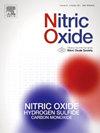Innovative nitric oxide-releasing nanomaterials: Current progress, trends, challenges, and perspectives in cardiovascular therapies
IF 3.2
2区 生物学
Q2 BIOCHEMISTRY & MOLECULAR BIOLOGY
引用次数: 0
Abstract
Cardiovascular diseases remain the leading cause of death worldwide, imposing a substantial impact on healthcare systems due to high morbidity, mortality, and associated economic costs. Nitric oxide (NO), a key signaling molecule in the cardiovascular system, plays a critical role in regulating vascular homeostasis, angiogenesis, and inflammation. Despite its therapeutic potential, direct NO delivery in the cardiovascular system is limited by its reactivity, short half-life, and poor bioavailability. The development of NO-releasing nanomaterials addresses these challenges by enabling controlled, targeted, and sustained NO delivery, mitigating systemic toxicity and improving therapeutic outcomes. This review provides a comprehensive overview of recent advancements in the design, functionalization, and application of NO-releasing nanomaterials for cardiovascular therapies. Key topics include the use of in vitro and in vivo models to evaluate efficacy in conditions such as myocardial ischemia-reperfusion injury, thrombosis, and atherosclerosis, as well as the role of stimuli-responsive systems and hybrid nanomaterials in enhancing delivery precision. Advances in nanotechnology, such as stimuli-responsive systems and hybrid functionalized nanomaterials for targeted delivery, have enhanced the precision and effectiveness of NO therapeutic effects for treating a wide spectrum of cardiovascular conditions. However, challenges like scalable production, biocompatibility, and integration with existing therapies remain. Future research should focus on interdisciplinary approaches to optimize these materials for clinical translation, ensuring accessibility and addressing the global problem of cardiovascular diseases.

创新一氧化氮释放纳米材料:心血管治疗的最新进展、趋势、挑战和前景
心血管疾病仍然是世界范围内死亡的主要原因,由于其高发病率、高死亡率和相关的经济成本,对卫生保健系统造成了重大影响。一氧化氮(NO)是心血管系统中重要的信号分子,在调节血管稳态、血管生成和炎症等方面起着重要作用。尽管具有治疗潜力,但心血管系统中的直接NO递送受到其反应性、半衰期短和生物利用度差的限制。NO释放纳米材料的开发通过控制、靶向和持续的NO递送、减轻全身毒性和改善治疗结果来解决这些挑战。本文综述了一氧化氮释放纳米材料在心血管治疗中的设计、功能化和应用方面的最新进展。关键主题包括使用体外和体内模型来评估在心肌缺血再灌注损伤、血栓形成和动脉粥样硬化等情况下的疗效,以及刺激反应系统和混合纳米材料在提高递送精度方面的作用。纳米技术的进步,如刺激反应系统和靶向递送的混合功能化纳米材料,提高了NO治疗效果的准确性和有效性,用于治疗广泛的心血管疾病。然而,诸如可扩展生产、生物相容性以及与现有疗法的整合等挑战仍然存在。未来的研究应侧重于跨学科的方法,以优化这些材料的临床翻译,确保可及性和解决心血管疾病的全球性问题。
本文章由计算机程序翻译,如有差异,请以英文原文为准。
求助全文
约1分钟内获得全文
求助全文
来源期刊

Nitric oxide : biology and chemistry
生物-生化与分子生物学
CiteScore
7.50
自引率
7.70%
发文量
74
审稿时长
52 days
期刊介绍:
Nitric Oxide includes original research, methodology papers and reviews relating to nitric oxide and other gasotransmitters such as hydrogen sulfide and carbon monoxide. Special emphasis is placed on the biological chemistry, physiology, pharmacology, enzymology and pathological significance of these molecules in human health and disease. The journal also accepts manuscripts relating to plant and microbial studies involving these molecules.
 求助内容:
求助内容: 应助结果提醒方式:
应助结果提醒方式:


